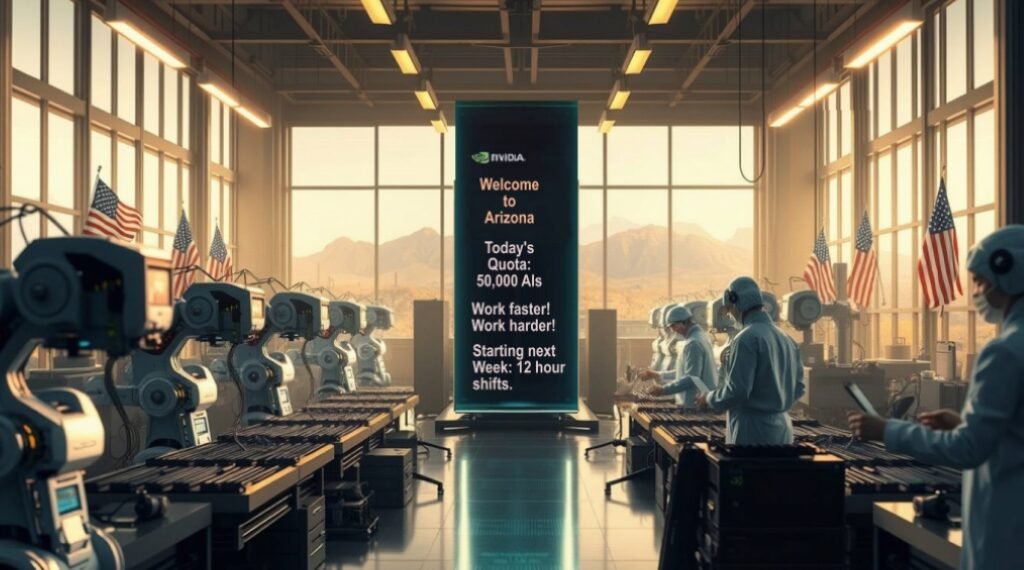Nvidia announced that it has started chip production at its factories in Arizona and will build associated supercomputers in Texas, thereby relocating the manufacturing of essential technology for generative and agentic AI to the United States. This development comes as President Trump’s volatile tariff policies continue to fuel business anxiety. Those unpopular tariffs have negatively affected the costs of importing technology and products traditionally manufactured abroad.
Following a steep decline in the stock and bond markets due to unpopular tariffs, Trump retreated by temporarily suspending most of his tariff-taxes, including exempting certain electronics, including phones, computers, chips and semi-conductors. In a statement on his social media platform, Trump said his administration would be “reviewing” the semiconductor and electronics supply chain, hinting at potential tariff deals. As AI becomes increasingly integrated into devices such as smartphones and software applications, rising production costs for companies could lead to significant negative consumer costs.
Nvidia confirmed that its Blackwell chips are being produced at TSMC plants located in Phoenix. Additionally, Nvidia supercomputers, intended for, and necessary to, AI-centric data centers, will be constructed in Houston in collaboration with Foxconn, and in Dallas with Wistron. Nvidia anticipates that production at these facilities will accelerate within the next year.
Nvidia’s CEO stated, “The engines of the world’s AI infrastructure are being built in the United States for the first time. Adding American manufacturing helps us better meet the incredible and growing demand for AI chips and supercomputers, strengthens our supply chain, and boosts our resiliency.” The push to enhance semiconductor manufacturing in the U.S. has gained momentum in recent years following the enactment of the Biden Administration’s CHIPS Act in 2022, allocating $53 billion to support domestic chip production.
The remaining question is what percentage of the labor in these U.S. plants will be human versus robot? In other words, will any of these 2025 plant relocations benefit U.S. workers and their dwindling incomes.
The ainewsarticles.com article you just read is a brief synopsis; the original article can be found here: Read the Full Article…





